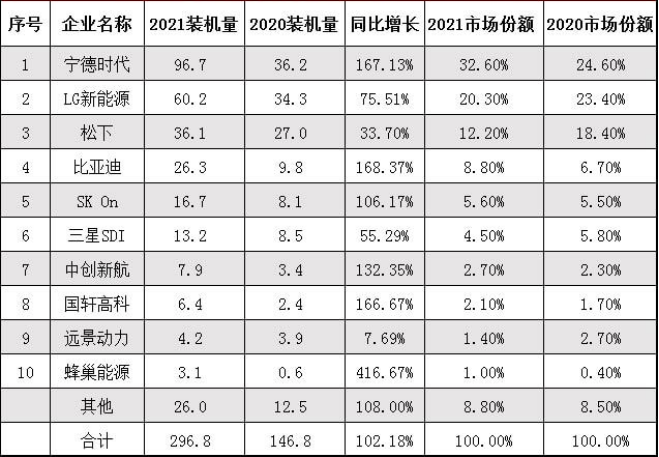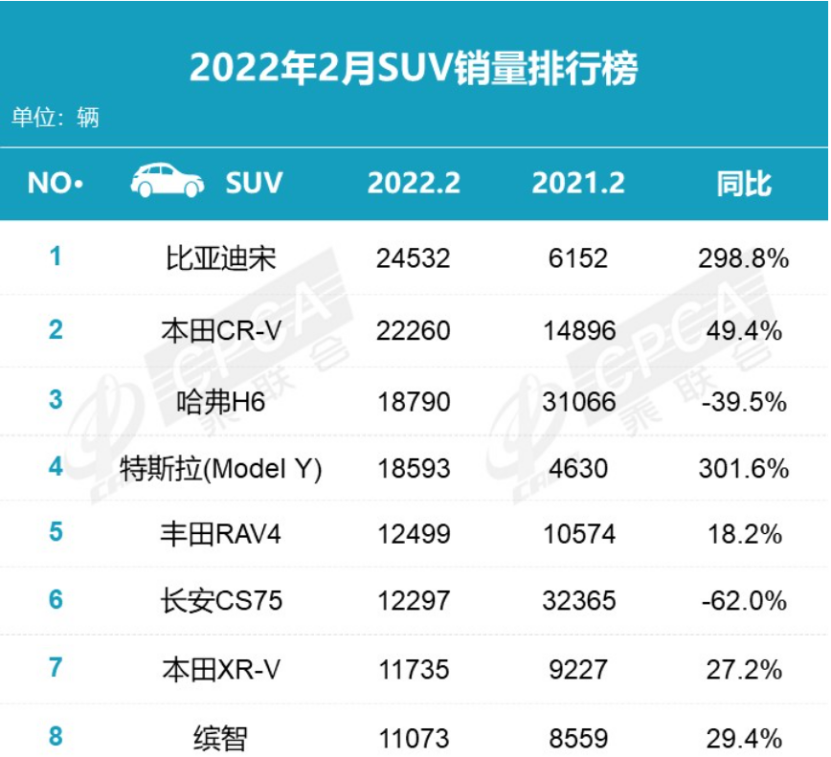Writing | Cold ZeLin
Editing | Wang Pan
Thanks to the significant increase in sales last year, Great Wall Motors’ total revenue in 2021 was RMB 136.405 billion, a year-on-year increase of 32.04%, and net profit attributable to shareholders of listed companies was RMB 6.726 billion, a year-on-year increase of 25.43%. Both revenue and profit achieved significant growth.
However, after the Chinese New Year, Great Wall Motors has been hit by negative news. First, due to rising raw material prices, two main models under the Ora brand were forced to suspend production. Then, affected by the shortage of both the Spring Festival and Bosch ESP supply, Great Wall’s new car sales in February were only 70,792 vehicles, a year-on-year decrease of 20.5%.
It is worth noting that in the announcement of production and sales data in February, Great Wall changed its style and began to disclose another set of data. “The sales ratio of Great Wall vehicles priced above RMB 150,000 increased to 15.5% in January and February, and the proportion of intelligent models increased to 88.1%. Lemon, Tank, and Coffee, the three major smart technology brand models, accounted for 75.1% of the distribution.”
Different from BYD, Great Wall put intelligence in the first place during its transition to new energy.
Following the launch of T-Wing Xiaoli, Great Wall recently launched its own NOH (Navigate On Highway) advanced driving assistance system, becoming one of the fastest-moving intelligent manufacturers among traditional car companies. Unlike pure electric models of new energy companies, NOH was first installed on the fuel vehicle WEY Mocha by Great Wall.
According to the official data and the test drive by Garage Number 42, NOH performs no worse than a new energy model.
Hoho Zhixing, which provides NOH navigation assistance for Great Wall, was independent from Great Wall’s advanced technology research and development department at the end of 2019. Relying on Great Wall’s huge annual shipment volume, Hoho has written a sexy story. “The installed base will exceed one million units within three years”.
Capital is also convinced, enabling it to complete two rounds of financing last year with an estimated value of more than US$1 billion. Similarly, Foton Energy, a power battery company that also came out of Great Wall in 2018, completed nearly RMB 20 billion in financing and began preparing to go public earlier this year.
If the first half of China’s new energy industry is electrification, then the second half is definitely intelligent competition. Can Great Wall, who has reversed the order, make new energy companies feel uneasy like BYD?
First Electric, Then Intelligent or Vice Versa?
As domestically independent brands that started in the late 1990s, Great Wall and BYD have chosen different transformation paths in today’s new energy wave.
On the surface, it is not an exaggeration to say that BYD is the most radical traditional car company in the transformation. In fact, this cannot be separated from the bold statement made by Wang Chuanfu since the day he acquired Qinchi Automobile, “Xi’an Qinchi can serve as an entry point for the electric vehicle market.”
However, other domestic traditional car companies are much slower in the transformation towards electrification. Ora can be regarded as the first step in Great Wall’s electrification transformation. Founded in 2018, Ora is the first independent new energy vehicle brand among China’s mainstream auto companies.
In 2019, Ora sold 39,000 vehicles, in 2020 56,000, and in 2021, through feminized marketing, sales surged to 135,000, which is almost the same as Great Wall’s total sales of new energy vehicles in 2021 (137,000).
Although it seems to be comparable to the Wuling Hongguang Mini EV, in fact, the Ora brand has not really brought much improvement to Great Wall, and the situation of low-margin mini-cars has not improved as upstream raw material prices have risen. On the contrary, low thresholds and increased competition will further exert pressure on OEMs.
On the other hand, as a male-dominated market, the growth space of women’s brands in the automotive industry is still relatively low, which also eliminates the possibility of further expanding the price range. Unless, like Mini or Smart, they have the support of two luxury brands, BMW and Mercedes-Benz.
In addition, Great Wall currently does not have any outstanding new energy vehicle models. The entire Haval series are all fuel vehicles and oil-electric hybrids (plug-in hybrids are considered new energy), and the Wei brand Maquiduo/Nalait DHT-PHEV models are priced 20,000 to 100,000 yuan higher than the oil-electric hybrid models, which is relatively higher than the premium of the BYD hybrid models.
An industry insider pointed out to Photon Planet that this is due to the cost reduction brought about by the simpler structure of the BYD DM-i. In terms of electrification, Great Wall is still moving slowly.
However, in terms of autonomous driving, BYD is a step behind. Currently, the BYD Han DM model is equipped with four panoramic cameras and one high-perception camera, while the Tesla Model 3 is equipped with eight cameras. The DiPilot intelligent driving assistance system of the Han EV adopts a scheme of three millimeter-wave radars and a monocular camera.
In the 42nd Garage Assisted Driving Evaluation, the DiPilot assisted driving system of the BYD Han EV, as a flagship sedan, ranked last on the leaderboard.
From promotion to actual configuration, BYD has not made intelligence a focus, which is actually BYD’s current strategy. Due to the lack of advantages in the fuel vehicle market and sales have been below that of Geely and Great Wall for many years, only by relying on low prices to occupy the market in the early stages of the new energy vehicle market can BYD raise enough capital flow to support its future actions.On the contrary, the basic platter of Great Wall is still stable. According to the data released by China Passenger Car Association, among the top three domestic automakers, Geely’s retail sales reached 1.213 million, a year-on-year decrease of 2.8%, while Great Wall’s sales reached 949,000, a year-on-year increase of 13.4%, and BYD’s sales were 724,000, a year-on-year increase of 73.5%.
In the short term, the basic platter of fuel vehicles will not be severely impacted by the rise of new energy vehicle sales. Relying on many years of experience in the fuel vehicle market, Great Wall is not in a hurry to sell new energy vehicles at low prices to overdraw the brand image, but has taken a similar path as new forces, by raising the selling price and brand image through intelligent technology.
For example, the recently launched Latte DHT-PHEV has a selling price of 300,000 yuan, which competes with the Ideal ONE. Meanwhile, the NOH assisted driving system developed by Haomo Zhixing will unlock urban navigation assistant function in the middle of this year. Full-scene NOH and HSD (HAOMO Self-Driving) will also be launched in the second half of this year and next year.
However, currently only XPeng has clearly stated that it will launch urban navigation assisted driving function this year.
To a certain extent, Great Wall’s progress in intelligence has caught up with some new forces, but its electrification speed still seems “half-hearted”. First electrification and then intelligence is the main direction of transformation for traditional automakers. Can Great Wall take a different path with first intelligence and then electrification?
Cooperation and Incubation
Traditional automakers are often bloated in terms of organization and decision-making processes due to many years of development. The comfort zone formed by the fuel vehicle market also makes some employees slack and lacking in drive. Therefore, the introduction of fresh blood and open systems is particularly important, and cooperation and incubation have become the key words for the current transformation of traditional automakers.
Great Wall has incubated three main companies, namely, Honeycomb Energy, Xian Dou Intelligence, and Haomo Zhixing.
Like BYD, Great Wall also has its own three-electric technology. The motor control is from Honeycomb Yichuang and the joint electronic control is outsourced. The battery comes from Honeycomb Energy, which is currently in the production capacity climbing phase.

In 2021, the penetration rate of new energy has continued to rise, and the demand for power batteries has also increased. According to data from SNE Research, with a growth rate of 416.67% and an installed capacity of 3.1GWh, Honeycomb Energy squeezed into the top ten power battery installation volume in the world.
Compared with the identity of BYD battery, Honeycomb was only established 3 years ago, and was only an internal project group of Great Wall before becoming a business unit in 2016, and then becoming independent and market-oriented in 2018. Its rapid growth is inseparable from the support of Great Wall behind it.The installation rate of Honeycomb Energy in Changan Automotive is 95%, and 5% is paired with models such as Leap Motor and NIO. Similarly, BYD’s battery self-production and self-sale ratio reached 94% in 2021.
Although both BYD’s Fe battery and Changan’s Honeycomb Energy have not completed weaning, the expectation of main engine manufacturers to strengthen the voice in the supply chain is becoming stronger, and the position of “king” is not stable. Many car companies are seeking second suppliers, such as XPeng and GAC introducing Zhongchuang Xinhang last year, while BMW signed a contract with CATL.
This means that second-line battery manufacturers still have a certain window of opportunity in the new energy market.
Therefore, at the Battery Day at the end of 2021, Honeycomb Energy also shouted the slogan of increasing its global production capacity target to 600GWh by 2025.
Compared with the production capacity plans of various companies in the same period, Honeycomb’s expansion this time may be intuitively understood.
CATL plans to have a capacity of 500GWh, and Guoxuan High-Tech plans to have a capacity of 300GWh, both of which rank above Honeycomb Energy. BYD, which sold 600,000 new energy vehicles last year, only has a planned production capacity of 450GWh for its Fe battery.
In addition to power batteries, Changan also incubated Xe-Vee Intelligent for intelligent cabins and Hao Mo Intelligent Driving for autonomous driving in 2019. The personnel composition of these two companies is very similar, with some from the automotive industry and some from the internet.
The mission of Xe-Vee Intelligence, established in March and partnered with Tencent and Changan in July, is very clear: to serve as a springboard between Changan and the outside world.
According to a senior Tencent executive, in the integration process of Xe-Vee, they combined the concept and methods of the Internet with some of the knowledge of the original automobile factory. In this transformation process, the left can connect to Changan, and the right can connect to the Internet.
Another company that focuses on autonomous driving under the protection of Changan, Hao Mo Intelligent Driving, has also grown into a unicorn.
Due to its backing by Changan, Hao Mo is not worried about the accumulation of assisted driving data, although it lags behind Tesla and XPeng, its shipments on Changan’s fuel and hybrid models are still considerable. As of March 2022, the assisted driving mileage of Hao Mo’s users has exceeded 6 million kilometers. Hao Mo estimates that the total number of passenger cars equipped with the HPilot system will exceed 1 million within two years.
Based on this, Hao Mo can also take a different path from other autonomous driving companies by adopting progressive autonomous driving research and development. On the one hand, it can quickly improve the competitiveness of Changan models, and on the other hand, it can also alleviate the revenue dilemma of autonomous driving companies.
According to Zhang Kai, chairman of Hao Mo Intelligent Driving, at the press conference, the company’s revenue in 2021 also reached several hundred million yuan, making it the fastest-growing autonomous driving company in China.
Changan’s HandBYD’s car infotainment system and assisted driving features have been criticized by many car owners, but this has not hindered its position as the domestic new energy vehicle leader. DM-i and blade batteries have played a significant role and are important aces in its deck at this stage.

In February of this year, BYD’s Song series won the SUV sales championship with sales of 24,532 vehicles, surpassing the longstanding leader, Great Wall Haval H6. Not only BYD, but also car companies such as Ideal, NIO, and Tesla often appear on the list of competitors to traditional fuel vehicles.
If we look closely at Great Wall, it seems that its several sub-brands have performed well, but when combined under the Great Wall vehicle model, they have not produced memorable products.
Although the Tank 500 sold more than 30,000 orders within a few months, and the Tank 300 is sold out, with the continuously tightening new energy policies, the future of large-displacement models is not optimistic.
On the contrary, the popularity of the Tank did not contribute to the transition of Great Wall’s new energy, and after the Tank became independently operated, Wei Pai did not enjoy much popularity, and was considered mediocre.
At present, Wei Pai continues to carry out the mission of the fuel-powered vehicle era, leading Great Wall to break into the high-end market. However, the brand’s overall sales in January were only 5,098 vehicles. Even with the help of intelligent cockpit and assisted driving, can Wei Pai’s DHT-PHEV compete with the strong momentum of BYD’s DM-i?
On the other hand, after winning a large market share, BYD turned around to catch up in intelligentization. This month, BYD has successively reached cooperation with Baidu and NVIDIA. BYD, with autonomous driving capabilities, may continue its high growth from last year.
In terms of pure electric vehicles, Ora is currently facing the problem of raw material price hikes and production halts. In addition, after the chip change and price increase, can Ora still be favored by consumers?
On the other hand, Great Wall’s high-end pure electric brand was also officially unveiled at the Guangzhou Auto Show last year. The unique appearance of the mecha-dragon seems to want to replicate the popularity of the Tank, but the exaggerated intelligent configurations and limited sales make it feel more like a gimmick.
In fact, when we analyze the cards Great Wall put on the table, we find that although Great Wall has many good cards, it has not produced a product or brand with potential in the new energy market.
Apart from Ora, which earns points for its vehicles, Wei Pai and Salon are determined to compete in the high-end market. From a normal perspective, there is not a popular vehicle that is suitable for the public, such as the Great Wall Haval H6 in the era of fuel-powered vehicles. When people mention Great Wall, they still think of SUVs and pickups, which are difficult to connect with new energy vehicles.
Great Wall has strong capabilities in creating explosive products, but it seems to be limited to the fuel vehicle market.
This article is a translation by ChatGPT of a Chinese report from 42HOW. If you have any questions about it, please email bd@42how.com.
